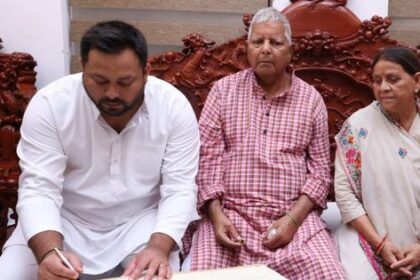Strong themes of loss and recovery resonate through Basudhara Roy’s poignant verses.
In the poignant verses of Basudhara Roy’s ‘A Blur of a Woman’, the complexities of grief and the struggle for resilience are deeply explored. The poem captures the heart-wrenching experience of a mother grappling with the loss of her child. It begins with the stark realization that the child’s life was tragically cut short, creating a void that the mother is left to navigate. This absence is not merely a personal loss; it symbolizes a broader existential anguish that reverberates through the lines.
The imagery of the mother’s pain is vivid and visceral. She is described as a woman marked by her child’s absence, her identity intertwined with the grief that defines her. The poet eloquently illustrates her attempts to articulate this sorrow, questioning her status as a mother—whether she is childless, barren, or bereaved. Each term reflects a different facet of her loss, and the struggle to find meaning in her altered reality is palpable.
Roy’s language evokes a sense of urgency as she captures the mother’s longing to hold on to the memories of her child, even as she confronts the harsh reality of their absence. The poem speaks to the universal experience of loss, where the bereaved often find themselves entangled in a web of memories, regrets, and what-ifs. The mother’s desire to understand where she went wrong adds another layer of complexity to her grief, revealing the self-blame that often accompanies such profound loss.
As the poem progresses, the imagery becomes more layered, portraying a world that feels indifferent to personal tragedy. Moments of violence and sorrow are juxtaposed against mundane experiences, such as a girl sewing her eyelids together, suggesting a broader commentary on trauma and the struggle for agency in a world filled with pain. The poet’s reflections on memory and time further emphasize the disorienting nature of grief, where past and present collide in a relentless cycle of remembrance.
The recurring motif of breaking emerges as a powerful symbol within the text. Roy suggests that breaking, whether of the spirit or the body, can lead to transformation. This notion is illustrated through the metaphor of a jigsaw puzzle or a fragile egg, emphasizing the potential for renewal that can arise from destruction. The poet encourages a readiness to confront one’s vulnerabilities, to embrace the possibility of breaking as a pathway to healing.
In the closing lines, a sense of defiance emerges. The poet asserts that it is possible to learn from pain and to find strength in fragility. There is an acknowledgment that while breaking is inevitable, it can also lead to a form of rebirth. This duality—of loss and recovery, of grief and resilience—permeates the poem, leaving readers with a profound sense of hope amidst the anguish.
Overall, Basudhara Roy’s ‘A Blur of a Woman’ serves as a poignant meditation on the complexities of grief, the struggle for identity in the wake of loss, and the transformative power of breaking. It invites readers to reflect on their own experiences of pain and recovery, suggesting that through the act of breaking, one can emerge renewed and ready to face the world once more.








